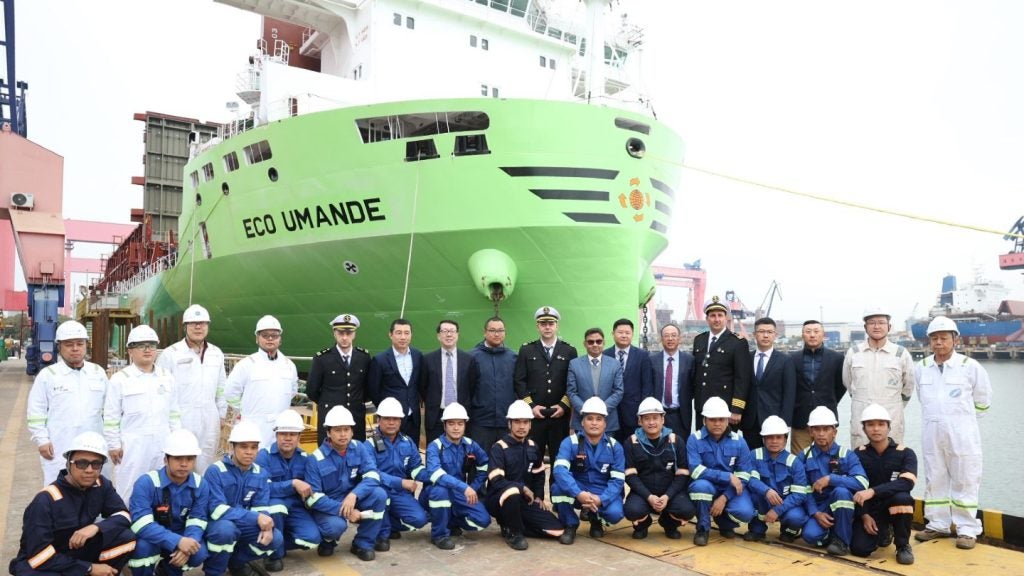The Covid-19 pandemic, followed by Russia’s invasion of Ukraine, has had a dramatic, and ongoing, impact on the global shipping industry. The containership market reached record highs, generating unprecedented returns – but the bonanza is over.
While one sector collapses, others are booming. The tanker market has sprung to life with the impact of Russia’s war on Ukraine fundamentally reshaping global trade routes; meanwhile, liquefied natural gas (LNG) carriers are the hottest ticket in town as European countries look for ways to ensure energy security.
Containership market outlook
The containership market has seen a period of sky-high rates and profitability from the second half of 2020; however, since the start of 2022, container freight rates have been falling. The bleak macroeconomic outlook and rampant inflation has weighed heavily on consumer demand, dampening trade volumes, while easing port congestion has boosted container transportation capacity. While liner companies have desperately cut services and blanked sailings, it has not been enough to prevent spot freight rates from returning towards ‘normal’ levels.
While this is welcome news for businesses and consumers, liner companies know that their peak profits are now firmly in the rearview mirror. Major global players in shipping reported record profits earlier in 2022, but the industry admits that it does not expect to see similar numbers again in its lifetime. The markets have taken note. A basket of listed containership operators would have roughly halved in value so far in 2022.
See Also:
Containership charter rates, having defied gravity in the first half of 2022, finally collapsed in the third quarter. Fixing a 1,700 TEU (20ft equivalent unit) feeder vessel would have cost more than $60,000 per day at mid-year, but now one could be picked up for one-quarter of that.
The immediate outlook appears grim, and since the vessel order book has grown immensely, it will be hard to stave off a classic shipping cycle with mountains of capacity delivered into an already soft market. Unless there is another extraordinary exogenous shock to the system, the container market will have to batten down the hatches.
How well do you really know your competitors?
Access the most comprehensive Company Profiles on the market, powered by GlobalData. Save hours of research. Gain competitive edge.

Thank you!
Your download email will arrive shortly
Not ready to buy yet? Download a free sample
We are confident about the unique quality of our Company Profiles. However, we want you to make the most beneficial decision for your business, so we offer a free sample that you can download by submitting the below form
By GlobalDataTanker market upcycle
On the flipside, after a couple of difficult years, the tanker market has finally sprung into life. The catalyst for the market pickup has been the shifting of trade patterns owing to sanctions on Russian exports, boosting tonne-miles demand, with a number of new long-haul routes replacing shorter ones.
Large crude tankers are now raking in earnings of more than $100,000 per day, while time-charter rates are at their highest since the storage-driven spike of early 2020. However, perhaps the stars of the show have been older Aframaxes, 15-year-old vessels that have doubled in value in 2022, with some remarkable short-term asset plays being executed. Most in demand has been the Ice-class tonnage for lifting Russian crude.
On the product tanker side, time-charter rates are at the highest level since the heady days of 2008, with rejigged global trade flows soaking up vessel supply.
For tanker owners, the tanker order book situation is looking quite positive. The order book as a percentage of the fleet sits at an all-time low, and shipyards have big backlogs of containerships and LNG carriers to build, so virtually no berths are available for the next few years. Given this backdrop, if demand doesn’t collapse, we are looking at a multi-year upcycle, a fact not lost on the market. A basket of listed crude tanker owners would have doubled in value in 2022, while product tanker companies have quadrupled in value.
Energy security drives LNG market to all-time highs
Russia’s invasion of Ukraine has rocketed energy security to the top of the agenda. European countries have scrambled for alternative supplies to replace piped Russian gas. Germany has signed up six FSRUs (floating storage regasification units), with two units, off Wilhelmshaven and Lubmin, due to be up and running by Christmas.
Spot rates for LNG carriers have reached astronomical levels of almost $500,000 a day, while time-charter rates have breached $200,000 per day, the highest on record. New-build prices keep rising and are now touching $250m per vessel, but the orders keep coming, with more than 300 ships now sitting on the order book.
In this new era of energy supply diversification and increased self-reliance, LNG shipping will become a key component of the energy transportation matrix, just as long as the shore-side infrastructure can keep up.
So, with the outlook bleak for the containership market following a period of record-breaking returns, it is time for other sectors to step into the limelight. The rush for energy security means fossil fuel shipping, on tankers and LNG carriers, is back with a vengeance.
This piece was originally published on our sister site Investment Monitor








